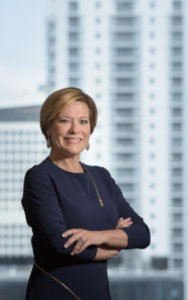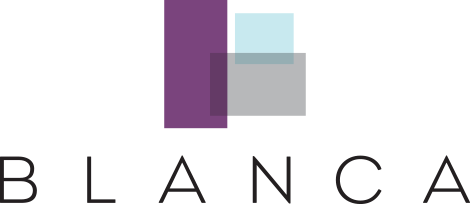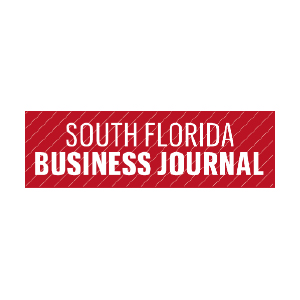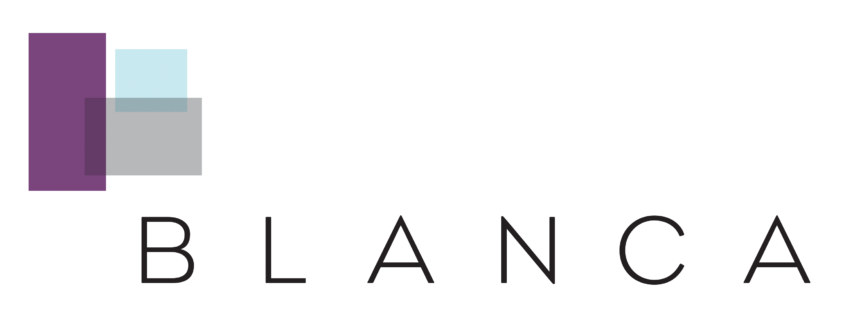Real Estate Journal: From ink to reality, the new Wynwood takes shape
By Brian Bandell
September 15, 2017
Just under two years since Miami approved a new zoning plan for the Wynwood Art District, developers have proposed many projects that would introduce new uses to the neighborhood, often with architecture unlike anything found elsewhere in South Florida.
This could be the start of a second transformation for Wynwood. For the first time, there will be large-scale apartment buildings with hundreds of residents to activate the neighborhood at all hours, and multi-story office buildings housing professionals in cutting-edge industries.
What was once a gritty collection of warehouses for industries such as garment manufacturing and shoe sales was reinvented into a trendy tourist attraction with captivating street murals. Wynwood now has some of the most popular bars and restaurants in South Florida, and an increasing number of unique retailers. Some warehouses have been converted into office space, mostly by firms in the creative industries.
Many investors who paid eye-popping figures for property in the neighborhood are now looking to develop them. So far, 11 projects have been proposed in Wynwood, creating opportunities for residents and businesses who prefer modern spaces, but with a vintage industrial feel.
Ten of the proposed projects are either ground-up developments or major adaptive reuses under the new Neighborhood Revitalization District, which allows for buildings of up to 12 stories tall and 150 residential units per acre.
Combined, they propose 296,872 square feet of retail, 176,766 square feet of office space, 985 residential units, and 1,953 parking spaces. So far, three of those projects are under construction.
The 11th project is Mana Wywnood, a special area planned by New Jersey real estate investor Moishe Mana approved for up to 9.72 million square feet of mixed-use development. Mana is working on plans to build a trade center there to facilitate business between the Americas and East Asia, including showrooms, retail, restaurants, and a hotel. Mana Wywnood has yet to break ground as some issues with the Wynwood Business Improvement District (BID) regarding buried power lines are in negotiations.
Jon Paul Perez, VP of Miami-based Related Group, said he saw all the property flipping in Wynwood at rapidly growing prices three years ago and didn’t understand it. After a closer look at the neighborhood and how many people visit on a daily basis, the Miami-based developer has bought in big-time. Related Group is a co-developer of four projects there.
“I go to Wynwood to eat. I go to Wynwood to bars,” Perez said. “It’s gratifying to be doing one of the first large-scale developments in a place that I enjoy hanging out in.”
Office a big driver
In South Florida, multifamily development is often the most lucrative from a financial perspective so areas with flexible mixed-use zoning tend to attract a lot of residential projects. Wynwood is more balanced.
The 10 proposals under the NRD include three apartment buildings, one condo and one live-work projects versus four developments with office space. This is in a neighborhood that has few traditional office buildings, mostly converted warehouses.

Tere Blanca, CEO of Blanca Commercial Real Estate
Wynwood is an ideal location for office space because it’s a neighborhood where employees want to play, said Tere Blanca, CEO of Blanca Commercial Real Estate, the broker for the Cube Wynwd office proposed by RedSky Capital and the office space component of the Wynwood DS parking garage by Goldman Properties.
Being near popular arts, food and beverage experiences makes a workplace more attractive for employees. Cube Wynwd, which should break ground in 30 to 45 days, is near Panther Coffee, and Wynwood DS is currently under construction near Wynwood Walls, she noted.
Blanca said there are no signed leases for either property yet, but there has been strong interest and at least one letter of intent.
“It’s only natural that office will flourish in the neighborhood,” Blanca said. “It has elements that are unique and are a draw to a very diverse demographic.”
The asking lease rates are $58 per square foot for Wynwood DS and $38 to $42 per square foot for Wynwd Cube, Blanca said. That’s comparable to rates in Brickell, downtown Miami and Coral Gables.
Blanca said office space in Wynwood won’t compete with those more traditional markets because it’s aiming for a different set of companies and workers. She also predicts that co-working firms will lease space in Wynwood.
“Three years ago, I would think Wynwood appeals to the creative industry like architects and communications and entertainment firms,” Blanca said. “Now it seems that it is drawing across all sectors of industries. Even law firms are considering Wynwood.”
Goldman Properties built Wynwood around office uses, said Joseph Furst, a managing director at Goldman Properties and chairman of the Wynwood (BID). More offices create more customers for restaurants, and more restaurants make the neighborhood more attractive for companies, he said. This could make Wynwood a great location for companies to lure talent, which is crucial in a tight labor market.
“I think we will be competitive with ‘Class A’ rents in the Central Business District if we are building ‘Class A’ buildings,” Furst said.
Related Group and East End Capital are building office space in the Wynwood Annex, which will share a parking garage with the Wynwood 25 apartments.
Perez said the partners chose office because new companies don’t want to be in typical corporate environments. He sees a market for technology-focused firms seeking 3,000 to 6,000 square feet of space. The employees in those firms then might want to live in the neighborhood too, he added.
Perhaps the biggest change in Wynwood is that people will soon be calling it home. The existing multifamily buildings are mostly small-scale. In late 2018, Wynwood 25 should have 289 apartments completed in the first wave of the neighborhood’s residential boom.
Many developers in Wynwood are testing out a relatively new design for South Florida, the micro unit. Apartments in Wynwood 25 will average 730 square feet, with the smallest in the low 400s per square foot.
Perez said Wynwood 25 was designed with extra amenities like an outdoor courtyard, a game room, a coffee bar, and an active rooftop with a garden, grilling area, cinema and pool, where residents can congregate.
“We want to create a whole new community within a building,” Perez said.
Most apartments in Wynwood 25 will ask under $2,000 in rent, he said. On a per square foot basis, this is similar to other new apartments in downtown Miami, but the small unit sizes bring the overall price down.
“The people who would be living there are price sensitive to rent and different than the person living in Brickell,” Perez said.
The new Wynwoodzoning allows developers of micro units to reduce parking requirements so not every unit has a space. Perez said Wynwood 25 will provide one space per unit so renters will have an option to park.
Meanwhile, Related Group and Block Capital Group are seeking foundation permits for Wynwood 26, with 174 apartments plus retail, and hope to break ground in 30 to 60 days, Perez said. To appeal to a young demographic, the commons areas will be designed by rock star Lenny Kravitz, he added.
The timing for W House is less certain because it’s planned as condos, in addition to office and retail, said Perez, who is partnering with Metro 1 Properties and Dragon Global there. Related Group is monitoring the condo market to determine the best time to launch sales. A decline in condo sales has put multiple projects in South Florida on hold.
Perez said condos at W House would be smaller and less expensive than in downtown Miami and Edgewater, perhaps $250,000 for a 500-square-foot unit. The advantage here would be for investors, who could buy a condo for less than in downtown Miami and probably have a higher profit margin renting it out, Perez said.
Once the first apartment buildings establish pricing in the residential market, that will clear the way for the W House condos and even more residential development, said Tony Cho, CEO of Metro 1 Properties, one of the earliest brokers to do business in Wynwood and owner of several local properties. He noted that Wynwood’s code allows short-term rentals.
“People can come in at $300,000 to $500,000 and own a piece of Wynwood,” Cho said. “It’s a market-rate condo product more catered toward millennials and creative people willing to live in smaller spaces with bigger amenities. It’s very leasable and will garner bigger returns.”
Developers are also counting on big returns from retail, which is a component of every proposed project in Wynwood. Cho said retail rents have continue increasing. He’s quoting over $100 per square foot from primary streets near Panther Coffee, and around $40 per square foot for side streets. Those rents are justified because most new tenants in Wynwood have been very successful, he said.
The good news for developers in Wynwood is that lenders are willing to finance projects in the neighborhood, said Charles Penan, executive VP of Miami-based Aztec Group, which has brokered loans on multiple properties in Wynwood.
“Wynwood is the only market in South Florida that’s not overbuilt in any asset class,” Penan said. “There’s a need for office, a need for apartments, a need for retail, and even a need for condos.”
An architect’s playground
The architecture in Wynwood’s new projects is far from the typical modern glass or Mediterranean style seen in most of South Florida. The proposed buildings are adorned with colorful art, crafted to harken back to the neighborhood’s history of repurposed warehouses, and designed with paseos acting like secret passages between streets. This creativity is not just encouraged, it’s mandated by the Wynwood Design Review Board created by the NRD.
About three-fourths of the projects have paseos, which will make it easier for pedestrians to navigate Wynwood’s long blocks, said Amanda Hertzler, executive managing director of architecture firm MKDA’s Wynwood office. Not only do paseos build on Wynwood’s theme as a neighborhood to explore on foot, they offer shelter from the summer heat in a place where shade trees are scarce, she said.
One functional reason that developers plan paseos in Wynwood is that lots are deep, Hertzler said. It’s hard to lease a 200-foot-deep space to a retailer because that’s bigger than their typical footprint. Designing paseos through the properly allows the developer to lease the interior space along the walkway to smaller retailers for pedestrians to discover once inside, she said.
“It is opening up the retail market to independent shops, which is the cornerstone of Wynwood,” Hertzler said.
MKDA designed Wynwood Park for ASG Equities and the Gindi family. Through adaptive reuse, a warehouse would be transformed into 41,000 square feet of retail and restaurant space with outdoor seating, multiple paseos, and nearly an acre of open space in a park-like setting. The second floor would have micro food and beverage shops, like a food truck experience, Hertzler said. The concrete walls would be punched out to create windows.
At a warehousing building owned by RedSky at 2407 N.W. 2nd Ave, MKDA created a plan to rip off the roof and put in a second floor, most likely for a display showroom, she said.
One reason that adaptive reuse projects such as this are attractive for developers is that the parking requirements are grandfathered in, so no new parking is required. Akerman attorney Steven Wernick, who helped write the NRD code, said the ability to transfer development rights from existing properties to new developers who want height bonuses also encourages adaptive reuse.
“We are trying to create interesting cuts in buildings and ways to activate rooftops and parts of buildings that would otherwise be forgotten,” said Wernick, who represents Goldman Properties. “What I have seen is a commitment by the DRC and the business owners to push the envelope, but with creativity and flexibility so each project looks a lot different from the next.”
Hertzler is conducting a ton of feasibility studies for developers trying to figure out what would work from both a design and a financial perspective.
One of the more creative ideas she came up with was a stack of 20-by-20-foot steel cage cubes that would form a building, with each glass-enclosed cube containing a different type of user. Few areas in South Florida would even consider that, but Wynwood is different.
Architect Kobi Karp, who designed Wynwood 25, said the new projects in the neighborhood are like an art gallery of buildings.
“It’s a collection of designs from the architects who are trying to express themselves,” Karp said. “The more you are building off of the DNA of Wynwood, the more successful you will be.”
Karp said Wynwood 25 was designed to resemble stacked warehouses. It will have a paseo decorated with art exhibitions.
Much of the creativity in Wynwood comes from the investors, Karp said. Many of them are companies from New York that have developed in trendy neighborhoods like the Meatpacking District, so they have experience with urban renewal.
The next chapter
As the first wave of development rises in Wynwood, many investors and businesses are waiting to see how the neighborhood evolves.
After a whirlwind of major real estate purchases in Wynwood from 2014 through 2016, only one $10 million-plus deal has closed so far in 2017. Cho said investors have purchased many of the best lots in Wynwood and are in development mode working to produce returns, so there are fewer sales now. Plus, traditional financial institutions have grown more reluctant to finance acquisitions at high valuations in a new area, he said. Cho expects that the success of the new projects will spur more deals.
The one development type that has yet to be officially proposed in Wynwood, but is desperately needed, is a hotel, Furst said. He knows a couple of groups working on hotel plans, but financing them has been an issue because there’s no track record of hotels operating in Wynwood to set expectations for financial performance.
With so many tourists visiting Wynwood and staying there late into the night, there’s a strong case for a hotel, Penan said. It would probably be a boutique brand, not a Marriott or Sheraton, he said.
When a hotel does come to Wynwood, Hertzler said that would drive even more tourists to restaurants and retails because they could stay in the neighborhood longer instead of dropping by for a few hours. She said the huge prices developers have paid for property in Wynwood have made it difficult to financially justify a hotel.
With retail as the most valuable property type in Wynwood, Hertzler expects that ground-floor office tenants like MKDA will eventually be pushed out of their spaces to make way for shops. That would create more demand for multi-level office space in Wynwood. She expects that many developers will build three-story office buildings, instead of the maximum 12 stories, because those will be easier to lease.
“You have beautiful views eight stories up, but there’s a disconnect with the neighborhood that high,” Hertzler said.
Hertzler hopes that redevelopment in Wynwood will result in more shade and better sidewalks, which is required of new projects, so it will be easier to walk around on hot days.
Furst said as the BID’s budget grows from new development – it’s at $850,000 now – then it could start creating neighborhood amenities, such as parking/transportation and public spaces. He looks forward to building a woonerf, a Dutch-style pedestrian street, at Northwest 3rd Avenue with outdoor furniture and landscaping. The city is already preparing a request for proposals to design it.
As residential, schools, and food and beverage come in, that creates a walkable community with strong job creation and economic development opportunities, Wernick said.
“When you bring in those residential buildings, now residents have amenities and jobs that they may be able to walk to from their apartments.”
Click here to view original article.




